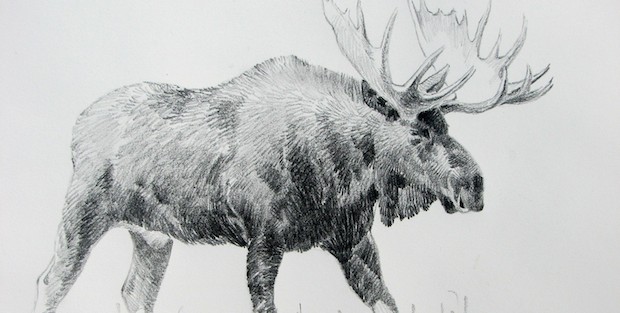There are many ways to celebrate Earth Day, beginning with the manner in which our student-run Environmental Task Force (ETF) did so this past Tuesday, April 22. With tireless support from Director of Facilities Terrence Kennedy, the Lycée Français de New York ETF chose this date to launch a brilliantly designed challenge to reduce paper consumption at the school by 10% over the next two weeks (please click here for the video our students have made for this campaign and look for a report on the results in a fortnight). Our heartfelt gratitude to them all for taking our environmental commitment to ever higher levels of achievement.
My own Earth Day was spent in the beautiful state of Maine, where Director of College Counseling Christine Pluta and I were visiting colleges on behalf of the Lycée Français. And it happened to be on this visit that I encountered for the first time a street sign calling attention to what I suppose is well-known to everyone familiar with that pristine area of the world: the possibility a moose might bound across the road in front of me! Alas, this “ruminant mammal…with humped shoulders, long legs, and broadly palmated antlers that is the largest existing member of the deer family and inhabits forested areas of Canada, the northern United States, Europe, and Asia” (Merriam-Webster Dictionary) stayed out of sight on this particular occasion, but the chance I might be lucky enough to spot one in the surrounding woods captured my imagination and reminded me of an article I had just read by Richard Louv, environmental educator and author of Last Child in the Woods: Saving Our Children from Nature-Deficit Disorder.
Louv recounts how he had once crossed paths with a black fox on Kodiak Island in Alaska and had immediately recalled what the British writer John Berger penned in About Looking: “With their parallel lives, animals offer man a companionship different from any offered by human exchange. Different because it is a companionship offered to the loneliness of man as a species.” As the fox stood still, momentarily blocking the trail before him, and then stepped aside to let Louv pass, all the while holding him in its gaze, the environmentalist’s thoughts were twofold.
As the only species conscious of its own mortality, humankind does lead a solitary existence, unable to converse about its predicament with anyone other than itself; however, when we human beings have an opportunity to see ourselves reflected in the eyes of another species, say in those of a black fox, we come to understand that we too are “part of the landscape”, that we too have a place in ecology of life, that we too have a kinship with the world as a whole which should be carefully nurtured, lest our “loneliness” become isolation and that isolation have potentially devastating consequences for us and the planet we inhabit.
So if one of our students reports to you that he or she has seen me wandering through our hallways these last few days asking if anyone has ever met a moose, that report is accurate! In honor of Earth Day, and following the lead of our Environmental Task Force, not to mention that of countless other members of our community who undertook to raise awareness about the environment this week, my extremely modest contribution to these celebrations has been to raise the subject of biodiversity among as many of our students as possible.
Of course, they did not have the slightest need for me in this regard, demonstrating yet again their characteristic sense of responsibility for the world around them. As one of our middle schoolers replied to my moose-related queries: I’ve seen a few moose, Mr. Lynch. For some reason, they just make me feel very peaceful. And every time I see a “Moose Crossing” sign, I always ask my parents to slow down so the moose don’t get hurt. Nature needs to be protected, right, Mr. Lynch?
Drawing by John Potter.
About the Author :
Sean Lynch was Head of School at the Lycée Français de New York from 2011 to 2018, after having spent 15 years at another French bilingual school outside of Paris: the Lycée International de St. Germain-en-Laye. Holding both French and American nationalities, educated in France (Sciences Po Paris) and the United States (Yale), and as the proud husband of a French-American spouse and father of two French-American daughters, Sean Lynch has spent his entire professional and personal life at the junction between the languages, cultures and educational systems of France and the United States. In addition to being passionate about education, he loves everything related to the mountains, particularly the Parc National du Mercantour.


